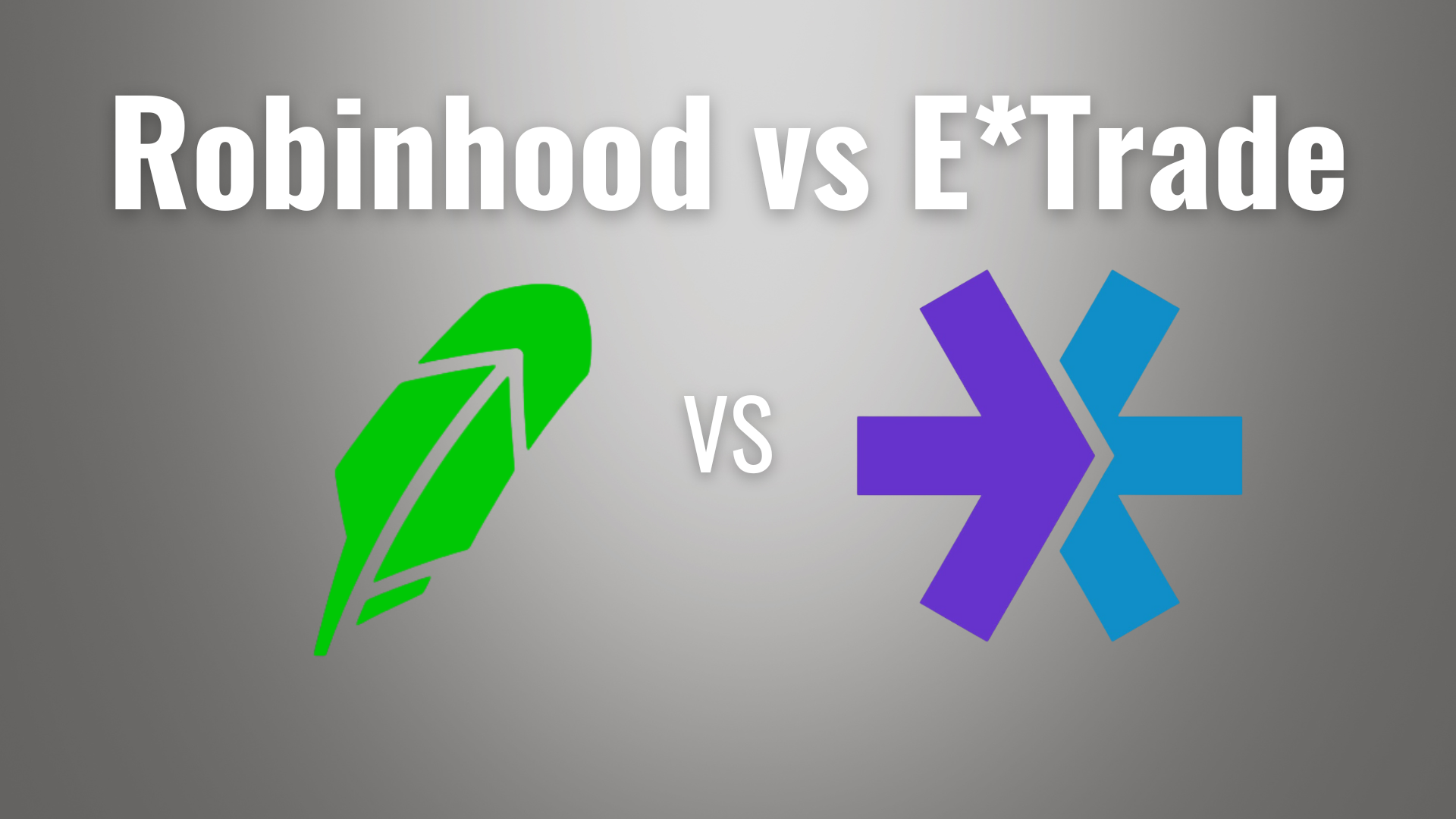[ad_1]
Intro
It’s never been easier to take investing into your own hands.
There are dozens of investing apps and trading platforms out there, and picking the right one is almost as hard as picking the right assets for your portfolio.
E*TRADE and Robinhood may be two of the most recognizable names in the space, but which one is better for you?
Keep reading for a quick breakdown of what each platform has to offer in terms of asset classes, markets, analytical tools, research, fees, and other important factors before you decide which to trust with your hard-earned capital.
The Platforms – Overview
Robinhood
Though Robinhood has a desktop site, it’s a mobile-first platform through-and-through.
Robinhood’s interface is sleek, simple, and easy-to-navigate, perfect for checking stock prices and making quick trades on the go.
That simplicity comes at a cost, however.
Robinhood has emphasized ease-of-use over functionality, and that shows when you try to chart your investments, access detailed research, or anything beyond searching for assets and making quick trades.
Although they’ve improved their access to market news, they never intended to have in-depth analytics and research. So if that is an important feature to you, you’ll likely need to go elsewhere.
E*TRADE
E*TRADE has desktop and mobile versions of both its regular E*TRADE and Power E*TRADE platforms.
The normal E*TRADE platform is packed full of valuable resources for veteran investors, and Power E*TRADE goes a few dozen steps further with interactive charts and a whole range of analytical tools that give you all the power you need to invest like a pro.
Both E*TRADE platforms are a little less streamlined than Robinhood’s, but if you love analysis and research, a few more menu items to sort through is a small price to pay for all the added functionality.
Markets and Asset Classes
Both E*TRADE and Robinhood let you trade stocks, ETFs, and options contracts on the major American exchanges, though only E*TRADE lets you trade mutual funds, commodity futures and options, fractional shares, penny stocks, and stocks on international exchanges.
Robinhood does have one big advantage over E*TRADE, though: cryptocurrencies.
E*TRADE lets you trade Bitcoin futures on its platform, but that’s the extent of its participation in the crypto markets.
Robinhood, on the other hand, has a full-fledged crypto wallet built into its app and lets you trade Bitcoin, Etherium, and tons of other cryptocurrencies on its platform with zero fees or commissions, making it the obvious choice for investors looking to trade crypto and not a whole lot else.
Education
E*TRADE comes out as the clear winner in this category as well.
You can find plenty of articles and links to relevant podcasts etc on Robinhood’s platform, as well as a decent number of resources designed to teach investing concepts and terminology to newbies, but you’re out of luck if you want anything more substantial than simple definitions.
E*TRADE, on the other hand, has a whole library worth of information for newbie investors and veterans alike, plus tons of content for people interested in long-term investing.
On top of tutorials, articles, and helpful videos, E*TRADE also offers what they call Virtual Learning Environments; all-day online classes with specific learning objectives that can benefit investors of all skill levels.
Research
E*TRADE has invested a lot more resources than Robinhood in this category.
Robinhood will give you some stock research and ratings from Morningstar if you pay $5/month for Robinhood Gold.
E*TRADE gives you research and ratings from Morningstar for free, and it gives you access to research from other top firms like Thomson Reuters, MarketEdge, Moodys, Trefis, and more…for free.
On top of all that, E*TRADE even has a tool for screening stocks and securities to meet criteria of environmental, social, and governance criteria, perfect for the socially and environmentally conscious investor.
Analysis Tools
Robinhood has some basic charting functionality, and it can do some simple account analysis like identifying balances, percent gain, dividend history, and so on, but its tools are basic compared to E*TRADE’s.
And as impressive as E*TRADE’s portfolio analysis tools are, the real star of the show is in Power E*TRADE’s charting and analytical functions.
Power E*TRADE’s interface makes it easy to create and edit charts on just about any security over any time period, and its built-in technical analysis functions help you predict where the market will go with technical studies and automatic support and resistance lines for identifying patterns.
As if that weren’t enough, Power E*TRADE lets you perform snapshot analyses to help determine whether an option trade will pay off, and its powerful scanning function lets you use real-time data to identify potential trades with just a couple clicks.
Costs and Fees
Opening and maintaining an account (even an inactive one) is free at both Robinhood and E*TRADE, and neither platform charges for stock or ETF trades, though their fee structure differs in most other areas.
Robinhood doesn’t charge for options trades, for instance, while E*TRADE charges $0.65/contract if you’ve made less than 30 trades per quarter or $0.50/contract if you have made more than 30 trades.
The platforms also charge different fees for margin: Robinhood charges a flat 9% on margin, Robinhood Gold includes $1,000 of margin for $5/month and 5% interest on margin over $1,000, and E*TRADE’s margin rates range from 11.7% for less than $10,000 to 9.7% for $250,000 to $499,999.99.
Verdict
Robinhood and E*TRADE are both great platforms with lots of strengths, they just serve entirely different purposes and are meant for different types of investors.
If you’re a new investor looking for a simple-to-use search and trade interface on mobile, or you’re looking to have your cryptocurrency and stocks all in one place, Robinhood is your best bet.
If you’re looking to learn, read intensive research, perform technical or portfolio analysis, or trade in anything more exotic than regular stocks and crypto, E*TRADE is the platform for you.
[ad_2]
Image and article originally from www.wallstreetsurvivor.com. Read the original article here.

